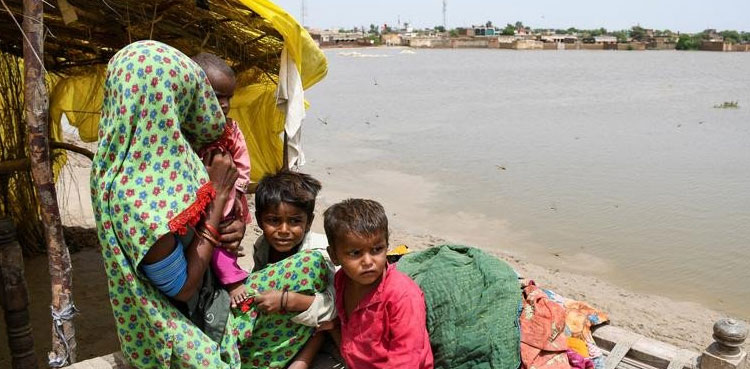
ISLAMABAD: Infectious diseases have seen a spike in the flood-affected areas of Pakistan, quoting sources ARY News reported on Monday.
In last 24 hours as many as 65,574 cases of various diseases have been reported in flood-stricken areas of the country, most cases reported from Sindh, according to sources.
Sources told ARY News that 11,518 cases of diarrhea were reported in flood-affected areas during the past 24 hours. Out of 15,056 diarrhea cases, 7,129 were reported in Sindh, 1,303 in Khyber Pakhtunkhwa, 2,806 cases in Balochistan and 280 cases in Punjab.
Moreover, the officials recorded 13,581 cases of skin infections, 8,769 cases in Sindh, 1551 in Balochistan, 1293 in KPK and 615 cases in Punjab.
Overall, 13,201 cases of asthma reported in the country’s flood-hit areas in last 24 hours, 9,357 of them in Sindh, 4,235 cases in KP, 2487 cases in Balochistan and 1025 asthma cases in flood affected areas of Punjab, sources said.
Total 671 cases of eye infection, 277 diarrhea cases, 50 suspected typhoid cases, 37 cases of Hepatitis, 1,520 cases of Malaria, 30 dengue virus cases, while 25,629 cases of other diseases were reported in flood-hit areas of the country during last 24 hours, according to sources.
The World Health Organization (WHO) has raised alarm about a “second disaster” in flood-hit areas of Pakistan following the unprecedented floods, which killed over 1,500 people and submerged one-third of the country’s land.
“I am deeply concerned about the potential for a second disaster in Pakistan: a wave of disease and death following this catastrophe, linked to climate change, that has severely impacted vital health systems leaving millions vulnerable,” WHO’s director-general, Tedros Adhanom Ghebreyesus, said in a statement.
The WHO’s director-general maintained that water supply is disrupted, forcing people to drink unsafe water, which can spread cholera and other diarrhoeal diseases.
Tedros Adhanom further said that stagnant water enabled mosquitoes to breed and spread vector-borne diseases such as malaria and dengue. Health centres had been flooded, their supplies damaged and people had moved away from homes which made it harder for them to access their normal health services.
“All this means more unsafe births, more untreated diabetes or heart diseases, and more children missing vaccination, to name but a few of the impacts on health,” he said, adding: “However, if we act quickly to protect health and deliver essential health services, we can significantly reduce the impact of this impending crisis.”
The WHO chief also pointed out that nearly 2,000 health facilities have been fully or partially damaged in Pakistan, urging the donors to continue to respond generously so that more lives can be saved.
from Health News - Latest breaking Health News - ARY NEWS https://ift.tt/zTecFgK


0 Comments